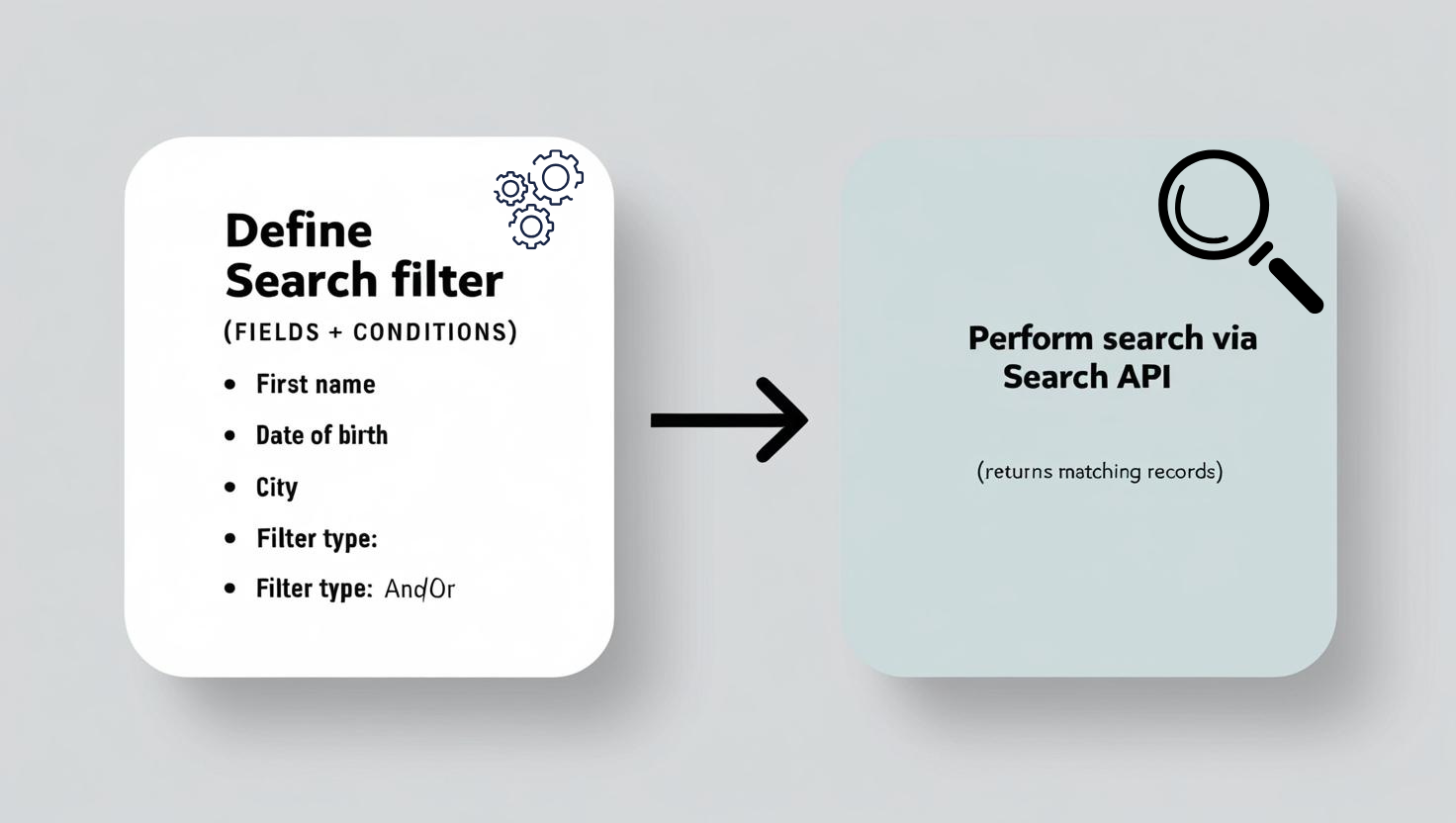Overview
The Search filter feature lets you define how you want to look up Customer or Transaction data. After creating a search filter, you can use the Copy cURL feature to import it into the API tool and run it.

Core Concepts
What is a Search Filter?
A search filter is a set of one or more indexed fields used to quickly look up data. You define which fields to search on—this setup is called the search filter .
There are two types of filters:
- AND filter – Returns results only when all the conditions are met
- OR filter – Returns results when any of the conditions are met (available only for the Customer entity)
Once the filter is set, the system knows how to query the database efficiently. You can then use the Search API to fetch the results.
Key Features
- Define the fields to search on—including custom and extended fields
- Set the time range for the data you want to query
- Supports partial search (starts with) for customer records
- Works across multiple languages
- Compatible with the Vulcan UI framework (but not limited to it)
- Choose which fields appear in the search results; use Neo for advanced customization
Understanding Cardinality
When creating a search filter, the system first checks the cardinality of the fields you've selected. Filters with high cardinality are more likely to pass validation and be activated.
-
High Cardinality means the field (or combination of fields) has a large number of unique values. This makes it a strong candidate for indexing and searching.
Example:Bill number—each value is likely unique. -
Low Cardinality means the field has only a few unique values. These fields aren’t ideal for filtering on their own.
Example:Gender—only a handful of values like Male, Female, Other. A filter with only this field will likely fail validation.
👉 Note: Cardinality is calculated based on all mandatory fields in your filter.
The filter must pass the cardinality check before it can be activated.
Search Filter Capabilities
| Entity | Filter Type | Filter Limit | Mandatory Fields Limit | Non-mandatory Fields Limit | Search Operators | Historical Data |
|---|---|---|---|---|---|---|
| Customer | OR | 2 | – | – | STARTS_WITH (partial search) | 10 years (based on registration date) |
| Customer | AND | 5 | 5 | 6 | EQUALS, RANGE (for date/datetime fields) | 10 years (based on registration date) |
| Transaction | AND | 5 | 5 | 6 | EQUALS, RANGE (for date/datetime fields) | 365 days (based on billing date) |
Example Flow
Step 1: Define Filter
- Customer entity
- Fields:
mobile OR email OR external ID - Filter type: OR
Step 2: Call Search API
- Endpoint:
v2/search/entity - Returns customer records that match any of the fields
Updated 5 months ago
